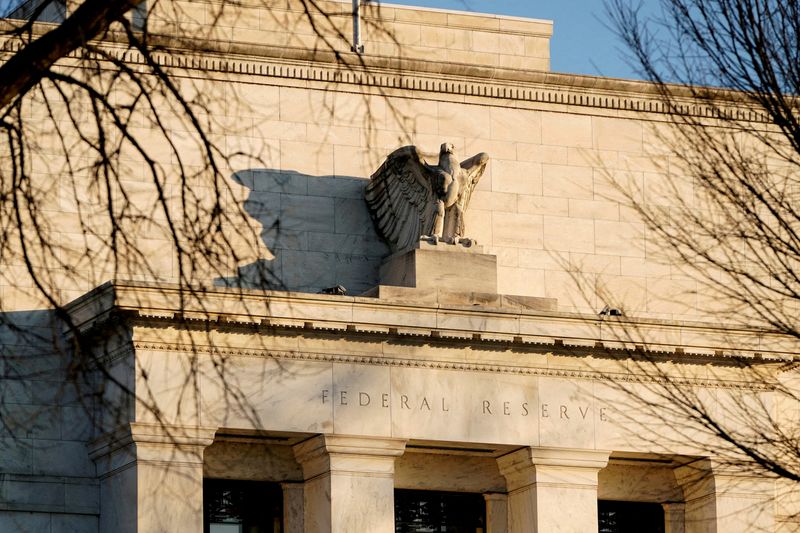By Johann M Cherian and Sukriti Gupta
(Reuters) -U.S. stocks declined on Monday, with the S&P 500 hitting a two-month low as bond yields surged following strong payroll data last week, reinforcing bets that the Federal Reserve will maintain a hawkish stance through most of the year.
At 11:39 a.m. ET, the Dow Jones Industrial Average rose 93.86 points, or 0.22%, to 42,032.31, the S&P 500 lost 36.53 points, or 0.63%, to 5,790.51, and the Nasdaq Composite lost 254.71 points, or 1.33%, to 18,906.92.
Wall Street's fear gauge rose 1 point, touching a more than three-week high.
The domestically sensitive Russell 2000 index declined 0.9% to its lowest level since September 2024, extending Friday's decline, which saw it enter correction territory after falling more than 10% from its November intraday record high.
Pressuring stocks, yields on longer-dated Treasury bonds are pinned at multi-month highs. [US/]
At one point, traders were no longer fully pricing in even one Fed rate cut this year, according to data compiled by LSEG, from about 43 basis points before Friday's job figures. Bets currently reflect expectations of a 25.6 bps easing by the Fed's December meeting.
"In the early stages of recalibrating monetary policy, investors tend to take a bit of a risk-off attitude," said Art Hogan, chief market strategist at B Riley Wealth.
"But the important part of what has changed thus far this year is that economic data being positive at the end of the day will likely be a net positive for corporate earnings and for markets."
Five of the 11 S&P 500 sectors declined, led by a 2% drop in Utilities. Megacaps were down, with Tesla (NASDAQ:TSLA) sliding 1.5%, Apple (NASDAQ:AAPL) dropping 2.4% and Alphabet (NASDAQ:GOOGL) losing 1.6%, sending the Nasdaq to a more than one-month low.
On the flip side, Energy rose 2.2%, tracking higher crude prices. The S&P 500 equal-weighted index was up 0.1%.
The main indexes logged their second consecutive week of declines in the previous session after multiple reports pointed to better-than-expected economic activity, raising worries that inflation could be running high.
Investors also priced in the likelihood that the incoming Donald Trump administration's policies - such as tariffs and a clampdown on illegal immigration - could threaten global trade and fuel price pressures when the Fed has also signaled a cloudy monetary policy outlook. Trump is expected to take office on Jan. 20.
The Consumer Price Index numbers and the central bank's Beige Book on economic activity, both due on Wednesday, will likely help investors gauge the Fed's policy outlook.
Some chip stocks fell, with Nvidia (NASDAQ:NVDA) dropping 2.9% and Advanced Micro Devices (NASDAQ:AMD) slipping 0.5% after the U.S. government said it would further restrict artificial-intelligence chip and technology exports.
Moderna (NASDAQ:MRNA) slid 21.8% to the bottom of the S&P 500 after slashing its 2025 sales forecast by $1 billion.
Dow component UnitedHealth Group (NYSE:UNH) added 4.3%, CVS Health (NYSE:CVS) rose 5.6% and Humana (NYSE:HUM) climbed 7.4% after the Biden administration proposed 2026 reimbursement rates for Medicare Advantage plans run by private insurers, which would result in a 2.2% increase in payments.

Declining issues outnumbered advancers by a 1.74-to-1 ratio on the NYSE, and by a 2.22-to-1 ratio on the Nasdaq.
The S&P 500 posted two new 52-week highs and 23 new lows, while the Nasdaq Composite recorded 19 new highs and 209 new lows.